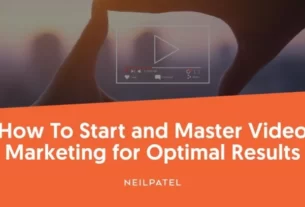[ad_1]
Cracking the Code: Video SEO Optimization Techniques That Get Results
In the vast sea of digital content, videos have emerged as one of the most powerful and engaging forms of media. From YouTube to social media platforms like Facebook and Instagram, videos have taken over our screens and captured our attention. But with millions of videos being uploaded every day, how can you ensure that your videos stand out from the crowd? The answer lies in video SEO optimization techniques that can help you crack the code and get the results you desire.
Video SEO (Search Engine Optimization) refers to tactics and strategies used to improve a video’s visibility and ranking in search engine results pages (SERPs). When implemented effectively, video SEO can increase your video’s organic reach, drive targeted traffic, and ultimately boost your brand’s online presence. Let’s dive into the key techniques that can help you achieve these results.
1. Keyword Research:
Just like website SEO, video SEO begins with keyword research. By understanding the keywords your target audience uses to find content, you can optimize your videos to match their search intent. Start by using keyword research tools like Google Keyword Planner or SEMrush to identify relevant and high-ranking keywords. Incorporate these keywords strategically in your video titles, descriptions, tags, and transcripts to boost SEO.
2. Engaging Thumbnails:
Thumbnails are the gateway to your video. They act as a preview, enticing users to click and watch. Creating engaging and visually appealing thumbnails can significantly improve your video’s click-through rate (CTR). Use eye-catching images, clear text, and bright colors to grab your viewers’ attention and entice them to click on your video.
3. Optimize Metadata:
Metadata plays a crucial role in video SEO. Metadata includes title, description, tags, and closed captions. Each element should be fully optimized to maximize your video’s visibility. Craft an attention-grabbing title that includes your target keyword. Write a compelling description that provides an overview of your video’s content and includes relevant keywords. Use tags that accurately describe your video and are popular among your target audience. Including closed captions or transcripts not only makes your video accessible to a broader audience but also adds additional textual content for search engines to crawl and index.
4. Captivating Content:
While optimizing your video is important, compelling content remains key. Create videos that deliver value, entertain, educate, or inspire your audience. Engaging videos encourage viewers to spend more time watching, increase watch time, and improve user satisfaction signals, all of which positively impact SEO rankings.

5. Video Length and Optimization:
The length of your video can influence its performance in search results. According to studies, videos that are around 2-4 minutes long tend to perform the best. However, the length also depends on the type of content you create. For tutorials or educational videos, longer durations might be necessary. Remember to optimize your videos for mobile devices since a significant portion of the audience watches videos on smartphones.
6. Promote and Share:
To get the maximum reach for your videos, it is crucial to promote and share them across various platforms. Share your videos on social media channels, embed them in blog posts, or collaborate with influencers to broaden your reach. Encourage your viewers to engage with your videos by liking, commenting, and subscribing, as these engagement metrics also contribute to improved SEO rankings.
7. Harness the Power of YouTube:
As the second-largest search engine after Google, YouTube should be a significant part of your video SEO strategy. Create a branded YouTube channel and fill it with informative and engaging videos. Optimize your channel description and use relevant keywords. Leverage YouTube features like playlists, end screens, and video cards to organize and promote your content effectively.
8. Monitor and Optimize:
Lastly, constantly monitor the performance of your videos and make necessary changes to optimize their SEO. Regularly review analytics to understand what’s working and what’s not. Use platforms like YouTube Analytics or Google Analytics to gather insights on viewer engagement, traffic sources, and audience demographics. Make data-driven decisions and adapt your video SEO strategy accordingly.
From Vine to TikTok: How Short-form Videos Are Revolutionizing Content Marketing
In conclusion, cracking the code of video SEO optimization requires a combination of keyword research, optimized metadata, captivating content, promotion, and constant monitoring. Implementing these techniques will help your videos gain more visibility, reach the right audience, and yield the desired results. By focusing on video SEO, you can differentiate your videos in a crowded digital landscape and get the attention your brand deserves.
[ad_2]





